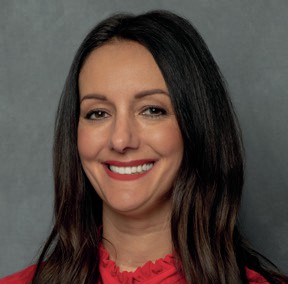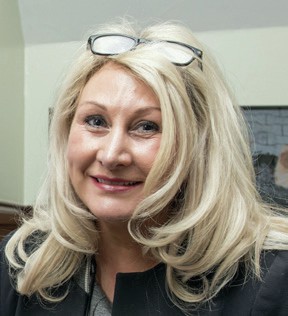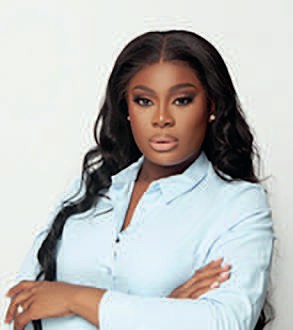BUSINESS TIPS
Ask The Experts
Our beauty experts answer your questions about every aspect of running a salon or spa business
How can mechanical facial stimulation help with physical signs of ageing?
There are many different ways to physically stimulate the skin on the face, including facial massage, microcurrent, high frequency, electro-muscle stimulation (EMS), cold therapy, and the mechanical stimulation used in LPG’s Endermologie treatment.
The science behind mechanical facial stimulation is amazing, even with using quite a simple technique. In the dermis there are very important elements, like collagen, elastin and hyaluronic acid, which give structure to the skin. As we get older these begin to break down, so we get sagginess and wrinkles.
During mechanical stimulation, a motorised device is used to stimulate the skin, using a system of suction and rolls and flaps to pinch. This works in the epidermis and dermis to create a reaction from the skin’s cells.
By mechanically stimulating the skin, you can increase blood circulation and the function of the fibroblasts, helping to strengthen the skin’s structure – hyaluronic acid in the treated area can increase by up to 80% after a course of treatments. It also has a very good action with lymphatic drainage, which is a great additional benefit that can help with puffiness, and there’s no downtime to this kind of treatment as the only side-effect is a slight flush to the skin.
Mechanical stimulation techniques work well in combination with a wide range of treatments, including microneedling and high frequency. It can even be used prior to injectable treatments to prepare the tissue, and it can be used two weeks after fillers and botulinum toxin injections to help maintain their results.
Facial mechanical stimulation can benefit clients who are concerned about visible signs of ageing, as well as those who are looking for an immediate radiance boost from a non-invasive treatment that respects the skin.
Contraindications for facial mechanical stimulation include cancer, infection, inflammatory diseases, anticoagulant medications, blood disease and herpes, while people with hypothyroidism and those undergoing long-term corticosteroid treatments may respond less well to this kind of facial treatment.

Esther Simon is LPG’s beauty trainer in the UK, with 30 years’ experience in wellness and beauty. Simon is based in LPG’s dedicated training academy in Hammersmith.
What are the best motivational tools to retain spa staff?
One of the biggest challenges facing the spa and wellbeing industry is the low rate of staff retention. As a spa director and a former spa therapist myself, I know that keeping spa teams motivated and excited to come to work each day are key elements in retaining staff, as well as continued training and personal growth. With that in mind, here are my four key recommendations.
1. Begin with a strong philosophy
Having a clear spa philosophy can be a powerful motivational tool for spa staff, creating a positive and inspiring work environment to encourage them to do their best work and provide exceptional service. A strong philosophy will also lead the direction and purpose for the spa and its staff, helping them to understand the spa’s mission and to feel like they are part of something meaningful.
It can also lead the way for personal growth and development – for example, if your spa’s philosophy emphasises holistic wellness, staff may be inspired to learn more about nutrition, fitness and wellbeing practices, which can benefit them both personally and professionally.
2.
Empower
with
training
It is so important to provide professional development opportunities so that staff can grow and develop their skills. This can include training programmes or attending workshops and conferences, as well as chances for career advancement within the spa.
At Daniel Thwaites, we recently launched the Spa Academy, where staff have the opportunity to work at a Daniel Thwaites Spa while completing a Level 2 or 3 Apprenticeship, which we believe is helping to build a highly motivated and skilled workforce to ensure the future of spa. It is worth considering having on-site training because this means your staff can learn from their peers and build strong relationships, as well as demonstrating that there can be longterm careers within the spa industry.
3.
Build
a
flexible
work
schedule
Try to be mindful of the importance of work-life balance by offering flexible scheduling options, such as part time, and ensure that staff have adequate time off to rest and recharge. This can help prevent burnout and improve job satisfaction.
Many spa staff are also parents or carers, so as an industry we need to build schedules that are both flexible and commercially viable.
4.
Create
a
positive
atmosphere
Recognition and appreciation can be just as important as bonus schemes and pay rises for staff morale, with simple acts going a long way to help motivate staff. This can include things like employee-ofthe-month awards, thank-you notes, or even small gifts or tokens of appreciation.
By celebrating achievements and life milestones as a team, both in and out of the spa environment, you’ll help to build a positive spa where staff feel both appreciated and seen.

Gemma Barratt is the group spa director at Daniel Thwaites, which has six hotels with spas. Barrett started at the group over 20 years ago as a senior therapist.
How can I detect the early warning signs of skin cancer in my clients?
Skin cancer is the most common form of cancer in the UK. Statistics reveal that one in four men and one in five women will be diagnosed with nonmelanoma skin cancer, and one in 36 men and one in 47 women will develop melanoma – the most serious, life-threatening form of skin cancer.
Beauty professionals have regular, close-up observation of their clients’ skin so are uniquely placed to identify potential abnormalities and provide signposting for professional clinical assessment.
Early detection, diagnosis and treatment can help to avoid surgery, improve patient outcomes and, most importantly, save lives.
Basal cell and squamous cell carcinoma, collectively known as non-melanoma skin cancer, is the most common form, usually occurring on areas of skin frequently exposed to UV radiation.
Signs and symptoms include:
• Asore or rough patch of reddish, irritated skin that isn’t healing.
• Apearly, pinkish or skin-coloured bump or nodule (this can also appear tan, brown or black).
• Apink growth with a rolled, elevated border and/or crusted centre.
• Awhite, yellow or waxy scar-like area.
• Awart-like growth or hard, white- or skin-coloured lumps.
Melanoma can occur anywhere on the skin. Around 70% of cases will appear as a new mole, and the remaining 30% occur in an existing mole or freckle that changes in appearance.
The ABCDE of melanoma is a common tool used to identify around 70% of cases: A = Asymmetry, when one half of the mole looks different to the other. B = Border, when the borders are irregular or have undefined edges. C = Colour, when the colour varies within the mole. D = Diameter, when the largest diameter is greater than 6mm. E = Evolution, changes to the mole’s size, shape, colour, surface or sensation.
If you spot any of these signs on your client’s skin, you should advise them to see their GP as soon as possible.
There are many other types of skin cancer with very varied appearances. It’s therefore important to learn more about the various types and how they present. That is why specialist skin cancer charity Skcin developed the MASCED (Melanoma and Skin Cancer Early Detection) training programme.
Designed to harness the power of the beauty professional in their capacity to help tackle this major public health concern, the training is supported, endorsed and accredited by key industry bodies.
There are two training courses available – MASCED for hair, health and beauty professionals, and MASCED Pro for advanced beauty professionals, allied health professionals and medical practitioners. For an exclusive 10% discount on the training courses, enter the promo code PROBEAUTY10.

Marie Tudor is the chief executive of national skin cancer charity Skcin, which specialises in the prevention and early detection of skin cancer through educational intervention.
What’s the best way to treat hyperpigmentation in skin of colour?
To start off, you need to acknowledge why the hyperpigmentation has occurred in the first place. Is it due to lack of sun protection? Does your client have a habit of picking at the skin and eventually it leaves a dark mark? A face-to-face consultation should help you to determine the cause.
To treat the issue, look for a tyrosinase inhibitor in your product. Tyrosinase inhibitors are enzymes that reduce the overproduction of melanin. These inhibitors include retinol, tranexamic acid, kojic acid…the list goes on.
Also, recommend a chemical exfoliator as opposed to a physical scrub. Don’t get me wrong, we all love a physical scrub, but the thing with using physical scrubs on the skin is that clients tend not to understand the pressure that they’re putting on the skin, which may lead to post-inflammatory hyperpigmentation.
Chemical peels tend to be more controlled, and they also exfoliate the skin evenly, not to mention that it will optimise the homecare maintenance results.

Mojisola Johnson is the lead aesthetician at Moji Skin Clinic in London and is passionate about ensuring men and women of all skin types are able to make informed decisions about their unique skin.
DO YOU HAVE ANY QUESTIONS TO PUT TO OUR EXPERTS? Send your question about absolutely anything to do with running a beauty business to editorial@professionalbeauty.co.uk